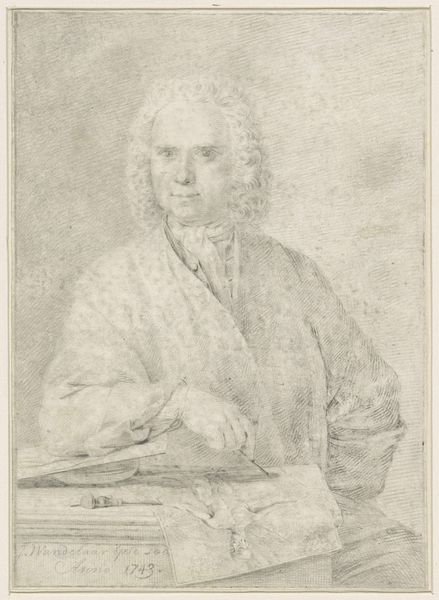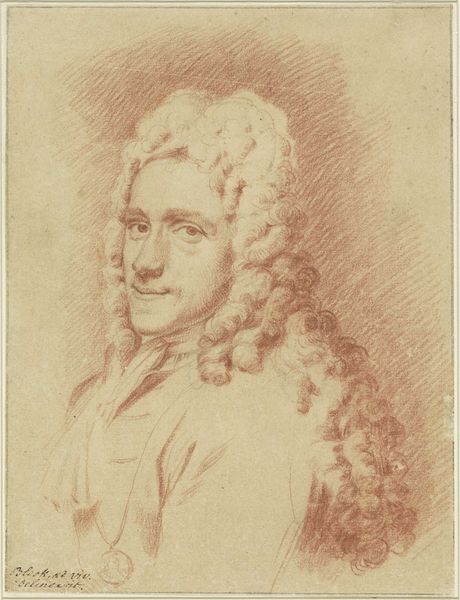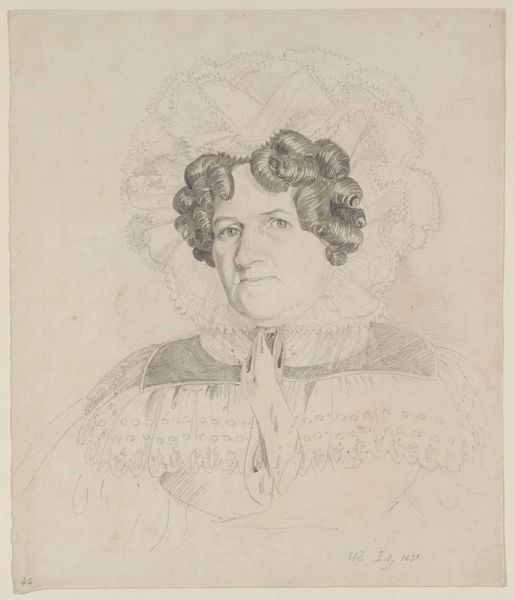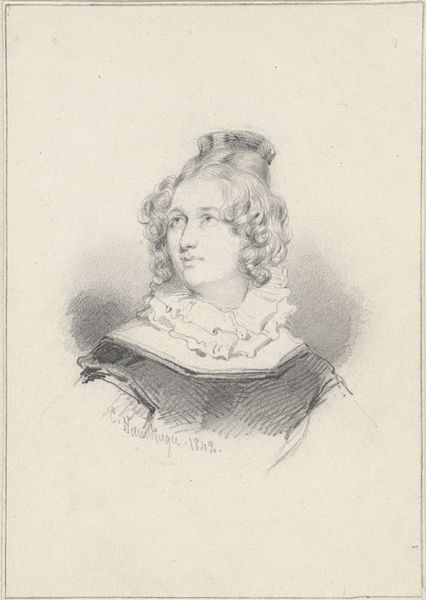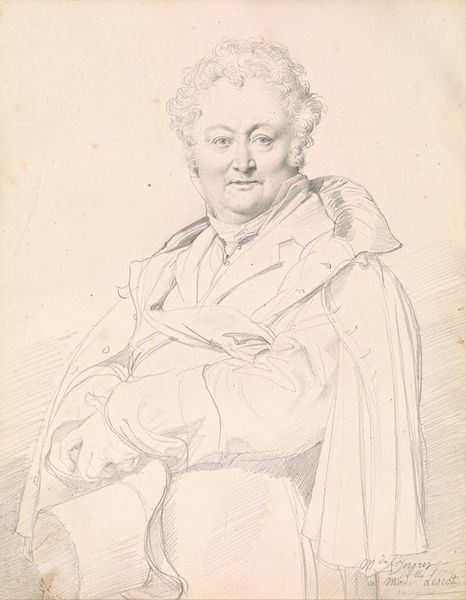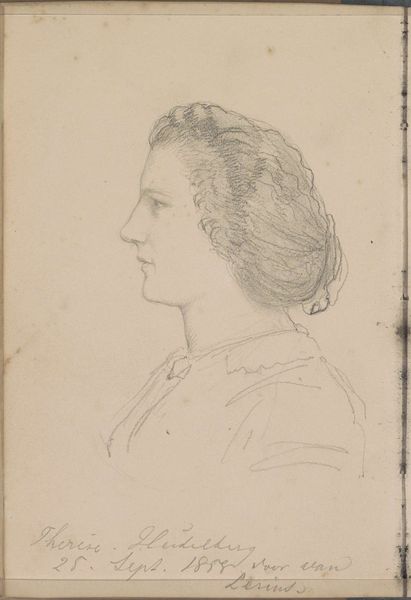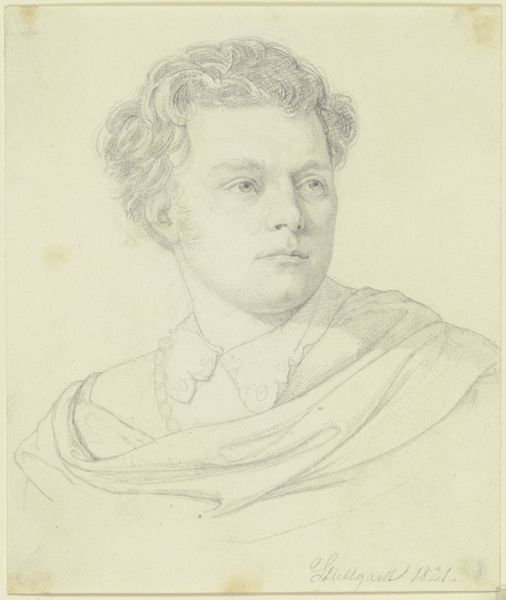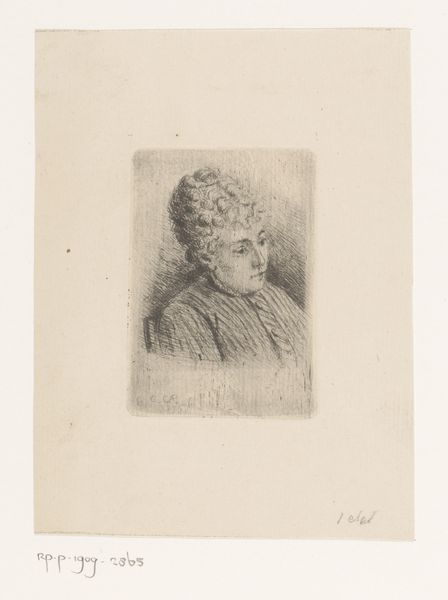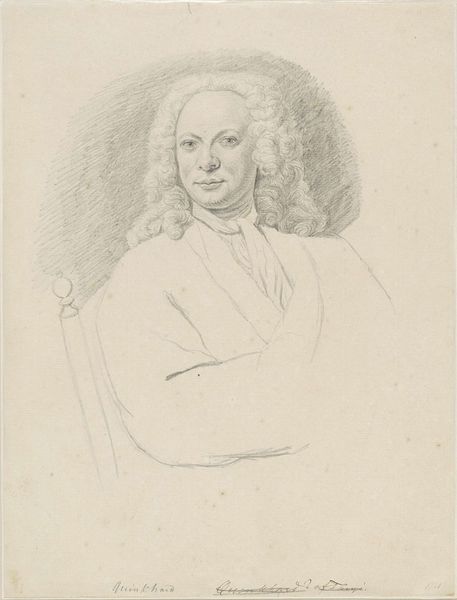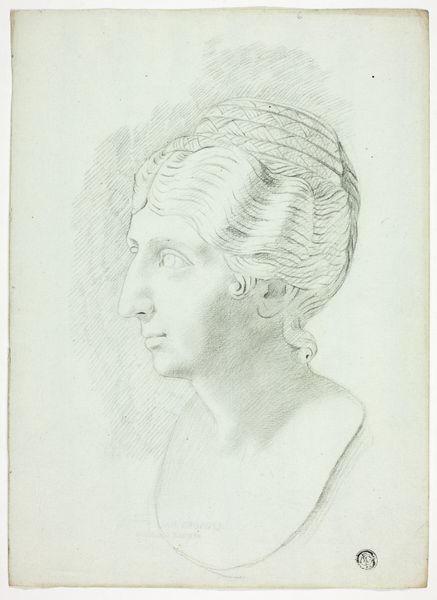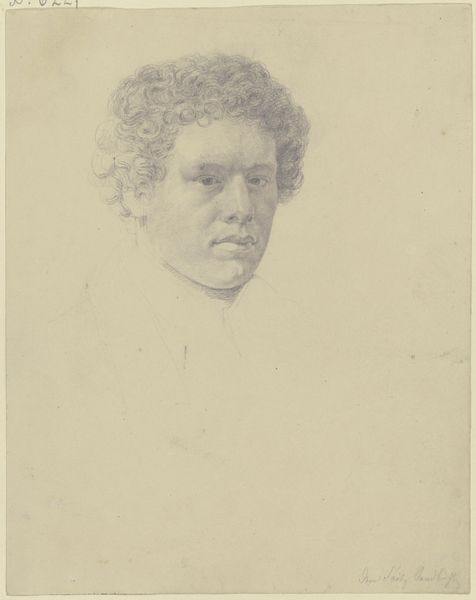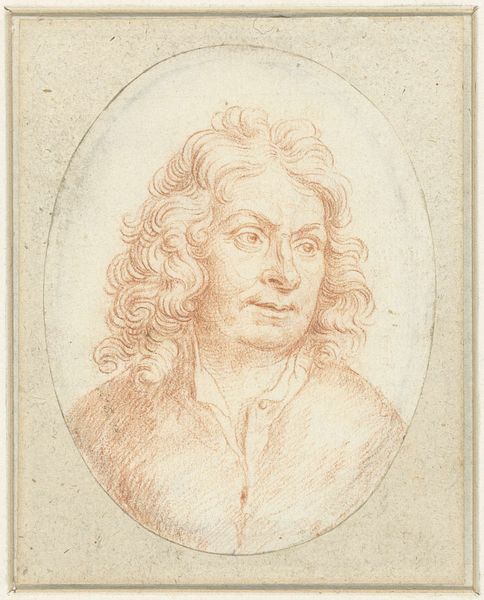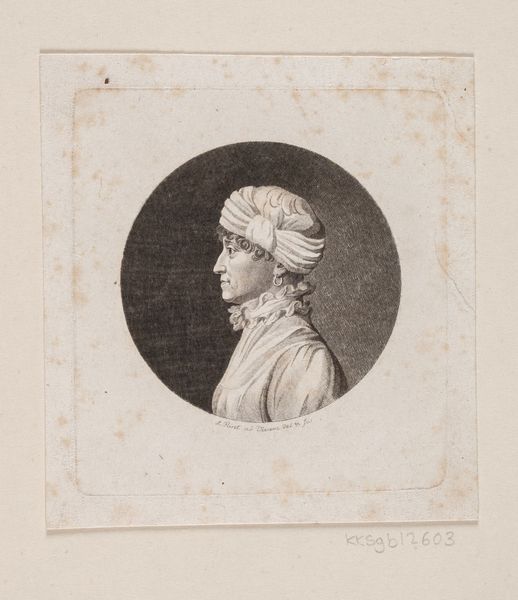
drawing, graphite
#
portrait
#
drawing
#
self-portrait
#
baroque
#
charcoal drawing
#
graphite
Dimensions: height 199 mm, width 163 mm
Copyright: Rijks Museum: Open Domain
Editor: This is "Portret van de schilder Dirk Valkenburg," or "Portrait of the painter Dirk Valkenburg," a drawing made with graphite or charcoal, sometime between 1685 and 1721. It’s interesting how soft the lines are, especially around the face and wig. What kind of symbolism was common in portraits like this during the Baroque era? Curator: The softness itself can be symbolic. Think of the sfumato technique, the haziness conveying mystery, suggesting depths unseen. Now, consider the wig. It's not merely fashionable, it signifies status, power, and intellectual engagement, particularly in a portrait of an artist. But more than that, doesn't the texture and fullness remind you of a halo, alluding to a sense of enlightenment? Editor: A halo? I hadn't considered the wig as something religious. So you see the portrait not just as a record, but also making a statement about the artist's significance? Curator: Exactly. Artists in the Baroque period increasingly saw themselves as divinely inspired. The tools and settings would reflect the allegorical function of self-portraiture. Notice anything absent that might normally suggest authority or wealth? Editor: Yes! There's a simple background and an informal dress that almost feels incomplete. So perhaps it represents his artistic pursuit superseding social conventions? Curator: Precisely! The symbolism leans into inner genius, a detachment from material concerns towards pure creativity. It begs the question of the function of portraiture beyond a simple likeness. What is he trying to project? Editor: It really gives me a different perspective. Instead of a mere record, it shows the values associated with this artistic identity. Curator: Indeed, symbols build visual stories that remind us of collective values long after the artist is gone.
Comments
No comments
Be the first to comment and join the conversation on the ultimate creative platform.
